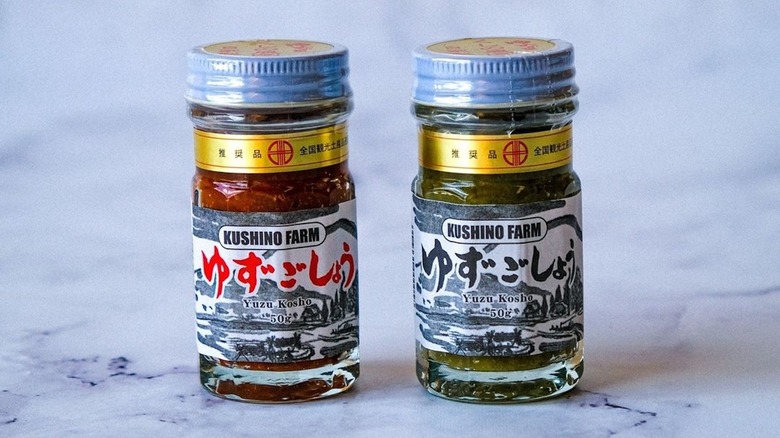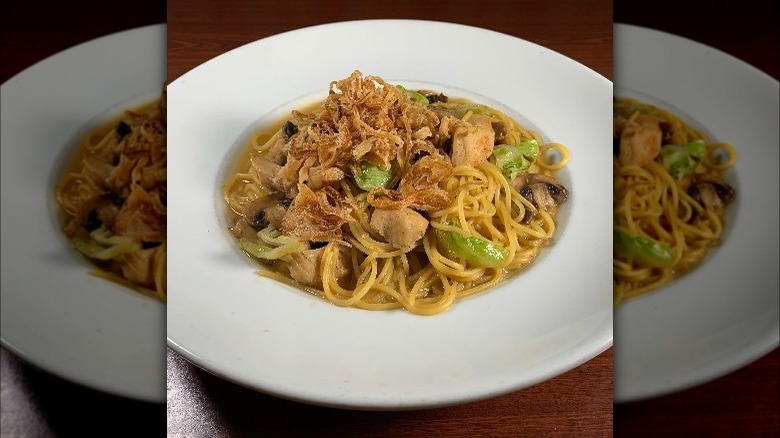When Adding Yuzu Kosho To Noodles, Should You Use Red Or Green?
Yuzu kosho — a popular condiment used in Japanese, Korean, and Chinese cuisines – sports a blend of sweet yuzu, spicy chili peppers, and salt. The fermented paste elevates everything from stir fries and sashimi to grilled meats, bowls of ramen, and noodles in general. Yuzu kosho traditionally comes in two colors: earthy green and deep red. Namiko Hirasawa Chen (also known as Nami), the mind behind the renowned Japanese recipe blog Just One Cookbook, explains to Mashed that green yuzu kosho is made from young, unripened yuzu rinds and green chili peppers, offering a vibrant kick. Red yuzu kosho is crafted from mature, yellow yuzu and red chili peppers, imparting a mellow yet powerful spice.
One of the biggest mistakes you can make with condiments is never expanding your palate. When it comes to using yuzu kosho in noodle dishes, Nami says the choice between green and red is truly a matter of taste. "It comes down to personal preference, as both varieties have different purposes." Green yuzu kosho boasts a bold piquancy and tangy citrus notes, while red yuzu kosho is characterized by its fruity fragrance and mild heat.
Either way, using yuzu kosho as a pasta sauce requires a delicate balance of flavors. A little bit of yuzu kosho goes a long way, so start with a small amount and adjust to taste, making sure to not overwhelm the dish.
Both yuzu kosho colors make delicious pasta sauces
To find yuzu kosho, visit your local Asian market or browse specialty food shops online for a ready-to-serve jar. As Namiko Hirasawa Chen suggests, "Green yuzu kosho is more readily available [than red yuzu kosho] at Japanese grocery stores here in the States, but you can buy both kinds on Amazon." Once you have the sauce in your kitchen, its versatility invites plenty of creative experimentation. Eating yuzu kosho with noodles, for instance, is a testament to the vibrant condiment's adaptability.
For the base of the meal, feel free to experiment with different types of Asian noodles such as udon, nabe, or soba. If you prefer green yuzu kosho as pasta sauce, enjoy the sauced noodles alone or pair them with additional ingredients that amplify green yuzu kosho's iconic zest, such as herbs like basil or cilantro, a splash of lemon juice, or a handful of chopped scallions. Fresh vegetables such as bell peppers and snap peas also provide a pleasing contrast in texture and sweetness. Alternatively, red yuzu kosho pasta sauce benefits from ingredients that complement its aromatic depth.
An umami mix of soy sauce, rice vinegar, sesame oil, yuzu juice, and brown sugar with either color of the paste introduces a new level of richness. A generous sprinkle of toasted sesame seeds or nori flakes brings additional flavor and texture to each bite. This flexibility gives you the freedom to prepare delicious, slurp-worthy yuzu kosho-infused noodles.

